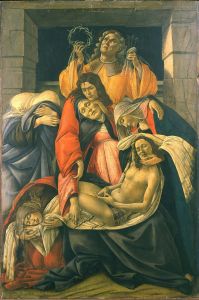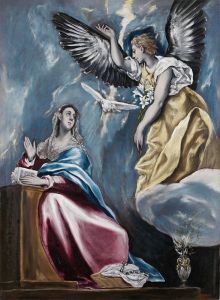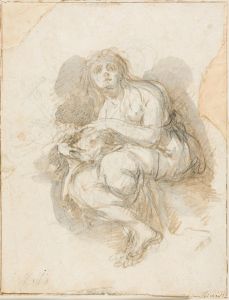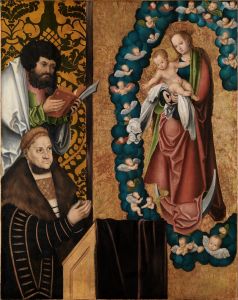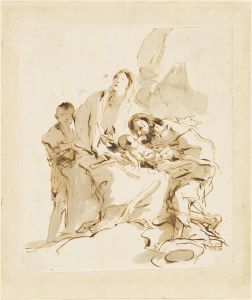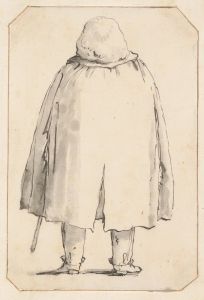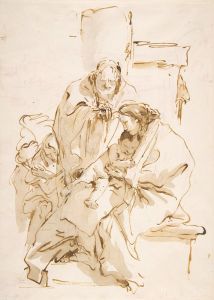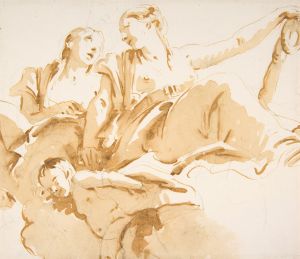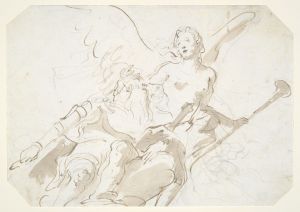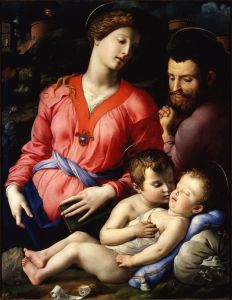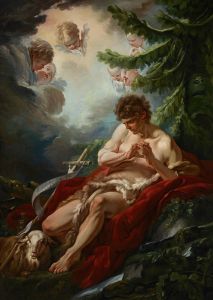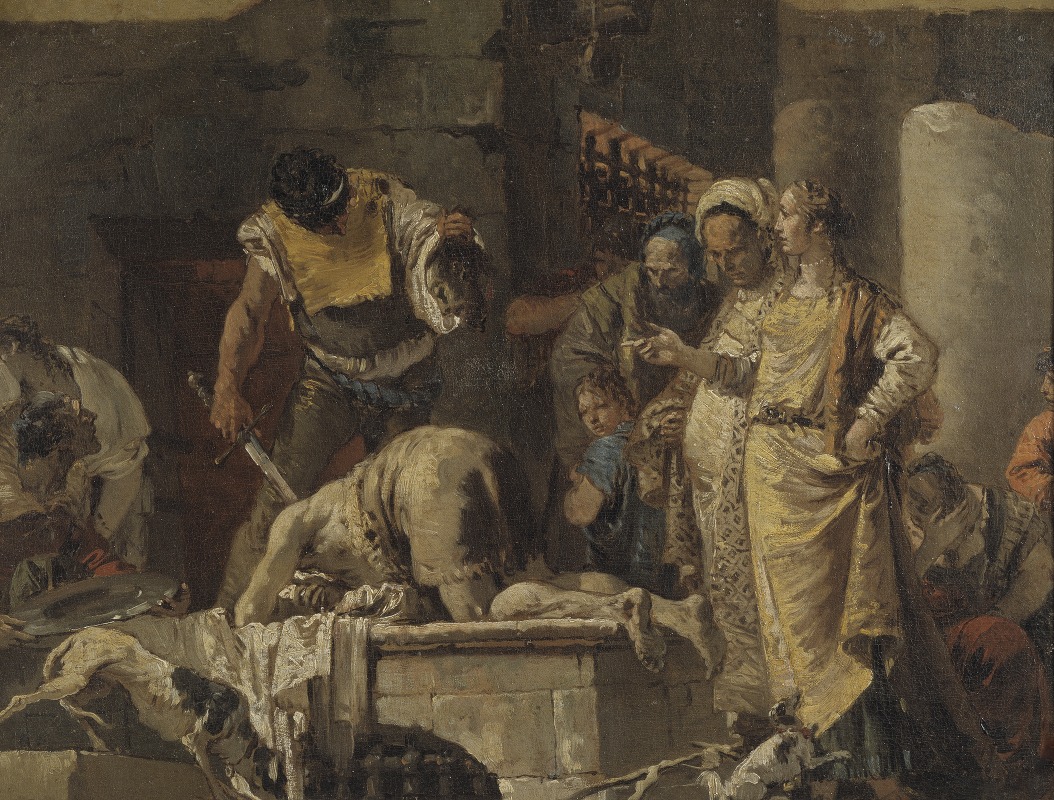
The Beheading of St John the Baptist
A hand-painted replica of Giovanni Battista Tiepolo’s masterpiece The Beheading of St John the Baptist, meticulously crafted by professional artists to capture the true essence of the original. Each piece is created with museum-quality canvas and rare mineral pigments, carefully painted by experienced artists with delicate brushstrokes and rich, layered colors to perfectly recreate the texture of the original artwork. Unlike machine-printed reproductions, this hand-painted version brings the painting to life, infused with the artist’s emotions and skill in every stroke. Whether for personal collection or home decoration, it instantly elevates the artistic atmosphere of any space.
Giovanni Battista Tiepolo, an Italian painter and printmaker from the 18th century, is renowned for his grandiose and dramatic compositions, often featuring religious and mythological themes. One of his notable works is "The Beheading of St John the Baptist," which exemplifies his mastery in capturing intense emotion and dynamic movement.
Tiepolo was born in Venice in 1696 and became one of the most prominent painters of his time, known for his vibrant use of color and innovative compositions. He was a leading figure in the Rococo movement, which emphasized lightness, elegance, and an exuberant use of color and detail. His works often depicted religious subjects, and he was commissioned by churches and palaces across Europe.
"The Beheading of St John the Baptist" is a powerful representation of the biblical story of John the Baptist's martyrdom. According to the New Testament, John the Baptist was imprisoned by King Herod Antipas for denouncing Herod's marriage to Herodias, his brother's former wife. During a banquet, Herodias's daughter, Salome, performed a dance that pleased Herod so much that he promised to grant her any wish. Prompted by her mother, Salome requested the head of John the Baptist on a platter, a request that Herod reluctantly fulfilled.
In Tiepolo's depiction, the scene is charged with drama and emotion. The composition likely captures the moment of execution or its immediate aftermath, focusing on the figures involved in this tragic event. Tiepolo's skillful use of light and shadow, along with his dynamic arrangement of figures, creates a sense of movement and tension. The expressions and gestures of the characters convey the gravity and solemnity of the moment.
Tiepolo's work is characterized by its theatricality and the ability to convey complex narratives through visual means. His paintings often include a rich interplay of colors and a keen attention to detail, which draw the viewer into the scene. In "The Beheading of St John the Baptist," these elements are likely present, showcasing Tiepolo's ability to blend realism with dramatic flair.
Throughout his career, Tiepolo received numerous prestigious commissions, including frescoes for the Würzburg Residence in Germany and the Royal Palace of Madrid. His influence extended beyond Italy, and he became one of the most sought-after artists of his time. Tiepolo's works are celebrated for their technical brilliance and their ability to evoke emotion and tell compelling stories.
While specific details about the creation and current location of "The Beheading of St John the Baptist" by Tiepolo may not be widely documented, the painting remains an example of his exceptional talent in religious art. Tiepolo's legacy endures through his contributions to the Rococo style and his impact on the development of European art in the 18th century. His works continue to be studied and admired for their artistic innovation and emotional depth.





